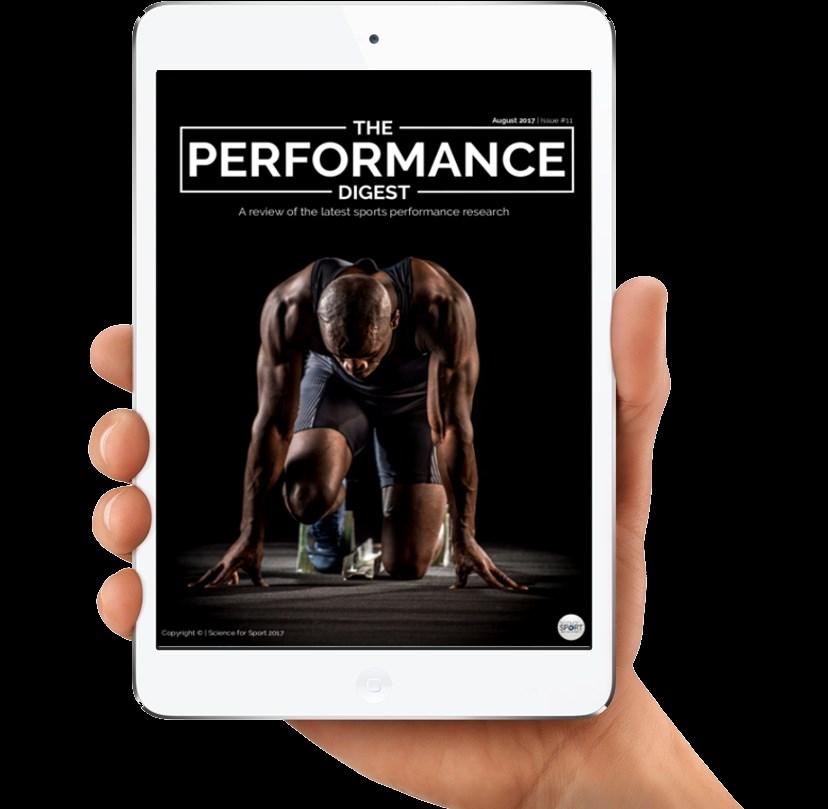

Study Details



Study Details
Practical Takeaways from study
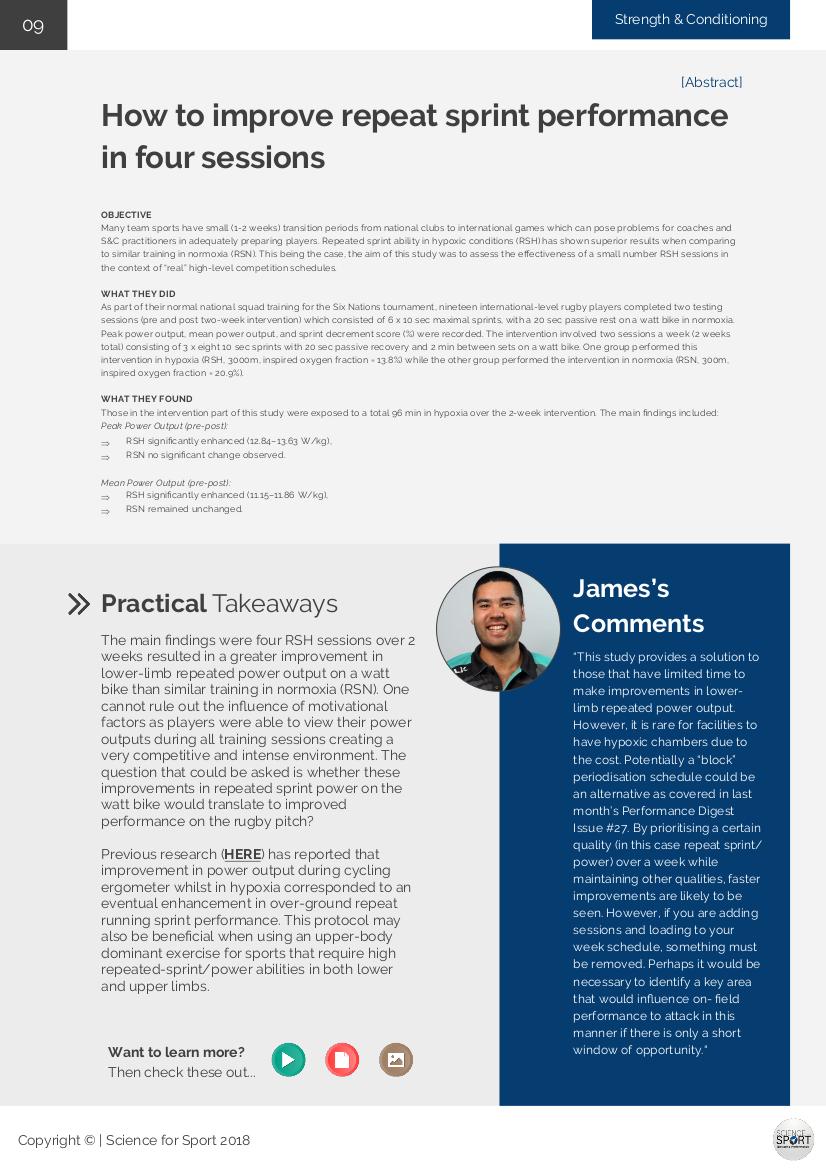
Related links to learn more about the topic
Reviewers comments on the study





Will is a Lecturer of Sport Coaching at Deakin University, Australia. Prior to this he has worked with Cricket NSW and Cricket Australia in an array of roles ranging from a sport scientist, development coach and a strength and conditioning coach. He completed his PhD at the University of Newcastle, Australia within the area of practice design.
Matthew is a Physical Therapist and the Clinical Director at a private Physical Therapy clinic in NYC. He has a special interest in the treatment of lower extremity/foot and ankle injuries along with helping runners and walkers to get back to what they love to do.


James is currently the Head Strength & Conditioning Coach for the Romanian Rugby Union. He has previously worked in America's professional rugby competition Major League Rugby with Austin Elite and the NZ Women’s National Rugby League Team. He is a published author and has completed a MSc in Sport & Exercise Science from AUT, Auckland, NZ.
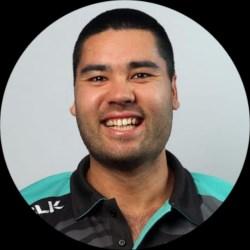
Technology & Monitoring
Cody is a strength and conditioning coach and adjunct lecturer at the University of Iowa. He has an MSE in Exercise Science from the University of Kansas and also holds a CSCS from the NSCA.
Tom is the Head of Athletic Development at St Peters RC High School. He holds a Masters in S&C and has previously worked with West Bromwich Albion FC, Gloucester Rugby club, and Great Britain Equine. Tom is our youth research reviewer at Science for Sport.
James is a Performance Nutritionist for the English Football Association and works alongside the England national teams (men's and women's). He is also a SENr registered performance nutritionist and holds a PhD from Liverpool John Moores University.


Jordan is a Physical Therapist and Strength Coach who currently practices in a Sports & Orthopedic clinic in Bergen County, New Jersey. He is passionate about educating athletes on ways to optimize performance while decreasing the risk of injury.


Coaches are always looking for ways to fast-track the development of their players, particularly within the youth sport environment. The creation and implementation of effective practice sessions is one consideration for coaches , with many researchers advocating for these sessions to be more representative of what takes place on the pitch, in the pool, or any other playing arena (see HERE).
Representative Learning Design (RLD) is a framework which encapsulates this thinking. The two basic premises of RLD are:


1. Ensuring the actions of athletes in the practice environment are based on realistic learning contexts (referred to as functionality)
2. The actions of the athletes in the practice environment are able to effectively simulate the demands of competition (referred to as action fidelity).
Within the sport of cricket, much of the practice session is spent within an enclosed net-based area, making it difficult (at least in the eyes of many coaches) to apply RLD. The aim of this research, therefore, was to design an RLD training environment for use in cricket and examine the improvement (or lack of) of a player's skill.
Over a five-week period, two amateur female cricket teams (Team 1: age = 19.7 ± 6.0 yr; Team 2: age = 18 4 ± 3.4 yr) took part in one training session that was developed using RLD. To ensure the players engaged with the sessions, each team selected the objective they wished to achieve from the training sessions for batting and bowling. Team 1 set out to increase the number of runs scored in singles, whereas Team 2 wanted to improve their overall scoring shot percentage (i.e., minimise the number of dot balls faced). For bowling, both teams aimed to increase their dot ball percentage (i.e., bowl more balls where runs were not scored).
The training sessions were designed by the lead author, who was experienced and had considerable knowledge of RLD and how it should be implemented, with the aim of achieving each team’s objective. Throughout the fiveweek period, the training sessions were progressively more representative of a typical cricket match and included a variety of activities and environments.
Each session was filmed to allow for video analysis to examine various measures for both batters (quality of the contact, force of bat swing, and footwork technique) and bowlers (line and length of ball on impact with pitch, number of runs and wickets) during the data collection period.
The lead author also interviewed each player at three time points during each session with the aim of understanding what each player was focused on during the session and what success looked like to them.

When taking a RLD approach to your practice design, consider the objective you and your athletes want to achieve first. In this study,each training session was designed with the specific objectives in mind as opposed to the repetition of a specific part of performance.
It should also be noted that this objective was one which did not state how each individual was required to achieve it. By creating a practice environment that promotes the achievement of a goal and allows for each individual to achieve this in their own way, numerous solutions and scenarios can be explored.
Then check these out...
Skilled Actions
1. Team 1 increased the number of singles scored by 30%
2. Team 2 only reported a 4% increase in scoring shots
3. Bowling performance improved for Team 1 and 2 similarly, with an increase of 28% and 26% respectively, reported.
Individually, 6/10 batters improved their ability to score single or complete scoring shots and 7/8 bowlers improved their dot balls percentage following the fiveweek RLD training period.
Athlete Perception
1. The thoughts of the batters changed from focusing on their own performance (e.g., improving technical execution of a specific shot) in week 1 to focusing on the objectives (i.e., more singles or fewer dot balls) by the end of week 5
2. Bowlers appeared to become more aware of the batter’s performance, highlighting that how they bowled (e.g. what line and length to bowl) was influenced by the previous skill execution of the batters (e.g., incomplete swing of the bat, poor footwork).
SCIENCE FOR SPORT PODCAST EP91


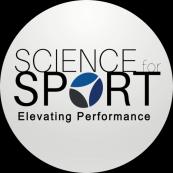
RLD does not mean the practice environment must look exactly like the competitive environment. In the sport of cricket , especially, this is not an option given the limited space, time, and facilities available. Coaches are encouraged to think about ways they can recreate aspects of the match within the confines they have. Consider what the key pieces of information your athletes need and how these can be replicated and provided to them in the environment you have.
Introduce RLD into your practice gradually if you are new to this approach. Getting your head around what the practice session looks like, how your athletes will respond to small or large changes, and what information players need to respond to, amongst other things, can take a long time. This gradual timeline is also useful for your athletes, as you won t be overstimulating them with excessive information all at once. As the authors of this study did, you could progress your practice sessions across various degrees of representativeness.
“Although it may appear like a commonsense idea, creating an environment that represents the functionality and action fidelity of a typical match environment makes a considerable difference to the development of athletes, particularly younger ones.
“Even if you don't understand the RLD framework and all its intricacies, just by giving athletes the opportunity to ‘train as they play’ can lead to improvements in all aspects of performance. The trick to using RLD though is not to over- think or complicate it. The training environment doesn t have to be an exact match to that of the competitive one, just enough to promote development and transference."

OBJECTIVE
The importance of communication and collective understanding are constant pillars to a successful team. Smartphones and web-based software systems have taken the immediacy and functionality of athlete self-report measures to a modern and mobile arena (M-ASRM). These ‘measures’ provide a pulse on athlete wellbeing (e.g. mood, stress, fatigue, etc.) and are exchanged digitally to provide coaches an opportunity to better modulate training and interaction with players. The constancy and immediacy of communication between coaches and athletes is at an all-time high and there is a lot of potential with M-ASRMs, but little is understood regarding the application and effectiveness within a team sport atmosphere. Therefore, the goal of this research was to understand the opportunities and trials that coaches and athletes experience when implementing M-ASRM in an interdisciplinary team.
WHAT THEY DID
Ten athletes (age 22-23) and 11 coaches and support staff (CSS, age 24-67) from 15 elite Gaelic games teams were interviewed individually, asking questions around their use and experience with M-ASRMs. Subjects had to be involved with an elite Gaelic games team, have used a M-ASRM system for at least one month and be at least 18 years old to be involved in the study.
Interviews were guided based on scripted topics, but questions allowed for free-flowing dialogue and discussion. These conversations were recorded and analysed based on theme, looking for emerging consistencies in experience between users. The interpretation of information provided a balance of favourable and unfavourable explanations around M-ASRM use and implementation in a team setting and were outlined by the research group.


WHAT THEY FOUND
Especially for CSS, using M-ASRM increased communication with athletes to an otherwise unattainable level.
Athletes’ opinions were inconsistent and varied between positively encouraging and unnecessary for self-management behaviours.
Emphasis on implementation and adoption was dependent on other factors such as team performance.
There is potential around M-ASRM implementation to reinforce negative perception (e.g. soreness, fatigue, pessimistic mood), and consideration should be given to risk versus reward associated with CSS gaining the information.
Since the accuracy of data is important, ‘backdating’ (recalling information from days where responses were missed) should be discouraged.


Encouraging and promoting honesty is important for valuable athlete feedback. Athletes should be aware of who has access to the information and how it will be used. With that, be cautious to make M-ASRM a decision-making tool that limits playing or training time.
Implementing a M-ASRM is not simply an automated system - it may be simple in its application, but there is a lot of time and tactics around evaluating responses and understanding actions that can or should be taken based on responses.
Want to learn more?
Then check these out...



Coaches can send a questionnaire on the morning of a planned training day to gain a baseline awareness of an athlete’s psychophysiological wellbeing for that day. This athlete feedback gives coaches an alert of potential follow-up (e.g. if soreness or fatigue is surprisingly elevated) and training adjustments that could be necessary for the upcoming session. Alternatively, this monitoring strategy can provide confidence in an athlete’s readiness and training response. A morning wellbeing questionnaire can be especially helpful when working with large teams of 20+ athletes, highlighting specific individuals, or even when working remotely with an athlete where direct contact and access is limited.
If implementing a M-ASRM is important to the CSS, do not demand or punish athletes to bolster adherence. Identify strategies that make responding as simple (e.g. reminders) and time efficient as possible, demonstrating how (e.g. training adjustments or follow-up conversations) and why the information can be useful to their success.

Coaches should expect the same from themselves that they do of their athletes, in that just as the athletes should be open to trying to implement a M-ASRM as a monitoring strategy, coaches should be open to adjusting the way a M-ASRM is implemented (e.g. specific questions, time or frequency of submission) based on feedback from athletes. All parties should give it a try but continue to reevaluate and adapt the process to best fit their team so everyone feels supported and effective.
If an athlete fails to submit a response to a M-ASRM on a given day, it is not appropriate to have an athlete attempt to recall their psycho-physiological state on a subsequent day for a previous day’s measure. There should be other monitoring strategies in place (e.g. jump performance measures, on field movement data, or post-session rating of perceived exertion) that provide objective measure and feedback for an athlete’s readiness or response to training.
Use M-ASRM as an open line of communication between coaches and athletes, in order to maintain accuracy and honesty in the athlete’s self-report- do not use the information to limit their training or playing time. The information should be used in a productive manner, as a starting off point for conversations around their psychological wellbeing and implementing sound lifestyle strategies (e.g. stress management, sleep, nutrition) that will support recovery.


Using a M-ASRM is a simplified expression of a very complex being (psycho-physiological state). It is important that an athlete understands what the coach is asking when asked to rate their mood, fatigue, or soreness on a 1-5 scale. Make sure these questions are well understood with repeatable and consistent explanation, and specific indications of what constitutes a 1, 2, or 3 rating (e.g. what is your overall muscular soreness? 5-no soreness at all, 4-minimal soreness, 3-moderate soreness, 2-considerable soreness, 1very sore).
“It is ironic that something that has been so simplified (an M -ASRM) is in fact incredibly complex. But that is what makes this process and interaction so intriguing for CSS who are aiming to provide the greatest return on investment, maximising readiness, and increasing the potential for success in competition. It is our competitive spirit and the appreciation for the holistic state of the athlete, not simply as a chess piece but as a human being that has thoughts, feelings, and emotions that matter and greatly influence productivity.
“Implementation of a M-ASRM is context specific, it takes tact inonboarding and consistency in managing to provide accurate and useful information. But if applied properly, the information can be critical and foundational to building athlete buy-in, understanding, and appreciation for all that goes into training and development. Everything affects everything, relationships matter, and it is not ‘what’you do but rather ‘how’ you do it that makes a difference in the success of athletic development, monitoring practices, and a harmonious psycho-physiological training process in a team sport environment."
Want to learn more?
Then check these out...
This month’s top research in strength & conditioning.
DECELERATION TRAINING IN TEAM SPORTS: CAN WE MITIGATE INJURY RISK?
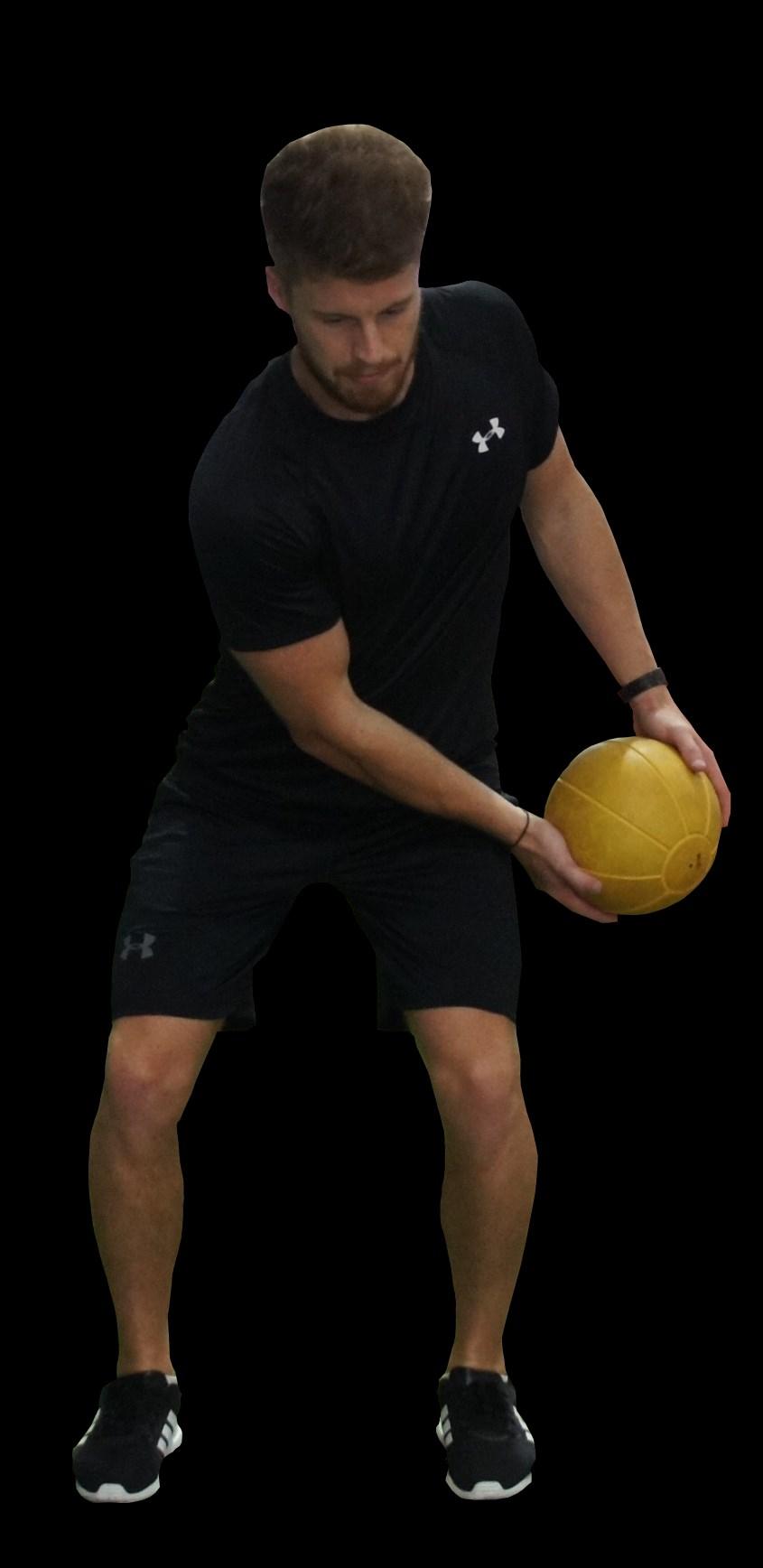
HOW STRONG DO YOU NEED TO BE FOR PRE-CONDITIONING TO WORK?
IS TRAINING TWO OR FOUR TIMES PER WEEK SUPERIOR FOR STRENGTH AND HYPERTROPHY?
WHICH HAS A GREATER ASSOCIATION WITH CHANGE OF DIRECTION PERFORMANCE: HORIZONTAL OR VERTICAL EXERCISES?

OBJECTIVE
Deceleration is the action that’s performed prior to a change of direction (COD) manoeuvre, or action immediately following a sprint. Although it hasn’t gained as much popularity as acceleration training, deceleration has the ability to generate high-impact braking ground reaction forces, potentially predisposing an athlete to an increased risk of neuromuscular fatigue. As a result, deceleration training may be beneficial to both acclimate and better prepare athletes to the higher mechanical demands during sport.
The purpose of this article was to highlight the importance of deceleration training and its impact on injury risk, as well as performance in team sports.
This current article discussed the biomechanical and physiological foundations of deceleration, along with the implications for injury risk. The considerations for integration of deceleration training in team sports was also highlighted to aid healthy and injured athletes looking to return to sport.

High-intensity horizontal decelerations are important to train in team sports due to the high demand of exposure during match play. As a result, evaluation of deceleration capacity should be included in athlete testing batteries, the same way linear speed and jump testing are assessed.
Players who ineffectively decelerate momentum prior to COD may experience increased knee joint mechanical loading during the final foot contact of COD, potentially predisposing them to injury.
Horizontal decelerations involve reducing momentum on the active muscle lengthening through braking actions, which are commonly classified as ‘eccentric’ contraction types. Deceleration ability, along with deceleration-focused resistance training, should be included as an important component in a multidirectional speed development program.
Want to learn more?

Then check these out...
When performing a sharp COD, the mechanical loading observed in horizontal deceleration is typically greater than what is observed during acceleration.

Braking steps during deceleration have a unique ground reaction force profile, characterised by a high-impact peak force in a shorter time frame.
High-impact peak can be explained by postural differences seen between heel strike associated with anterior foot placement during deceleration, in contrast to more mid-to-forefoot ground contact typically seen in acceleration.
SCIENCE FOR SPORT PODCAST EP 91


“Deceleration training should be implemented as a part of a wellrounded strength & conditioning program, and more importantly in a rehab program, as injuries often occur when high speed braking forces are required during sport. The ability to ‘train’ the brakes is an essential component of injury risk reduction. You shouldn’t speed up what you can’t slow down, so an athlete’s ability to control positions will directly carry over to the demands of sport.
“Our ability to produce force is highly dependent on how well we can accept forces. In the clinical setting, I always prescribe deceleration and force absorption exercises prior to force production , and light implement power (jumps, hops, bounds) once an athlete can demonstrate ample lower extremity strength, endurance and neuromuscular control.”

Priming exercise takes advantage of the post-activation potentiation phenomenon, or PAP for short. PAP involves performing a pre-conditioning exercise (usually a heavy resistance exercise) which enhances the performance of the subsequent power exercise. Priming extends the time window between the pre-conditioning exercise and power exercise up to 48 hours. It has been determined that stronger individuals gain a stronger PAP response but it is yet to be determined if strength level influences priming strategies.
Further, how priming affects the force-velocity profile remains unclear. Therefore, this study aimed to determine if priming impacts jump performance in stronger and weaker individuals and how it affects the force-velocity profile..
Twenty resistance trained men (age 22.4 ± 1.5 yr) performed both the priming and control condition in two separate sessions. Before and after the pre-conditioning exercise, all subjects performed a squat jump (SJ) at 0% and 40% 1RM, countermovement jump (CMJ) at 0% and 40% 1RM, and drop jump (DJ) on a force plate.
Force velocity profiles of SJ and CMJ were created from 0% and 40% 1RM loads to calculate theoretical maximum force (F0), theoretical maximum velocity (V0), slope of the force-velocity profile (Sfv), and maximal power (Pmax).
The pre-conditioning exercise condition consisted of the 5 x 4 jump squats at 40% 1RM; 24 hours later, the tests were repeated. The control condition only performed the tests.
For analysis, subjects were split into stronger and weaker groups. The stronger group had a relative half squat of 1.93-2.67 and the weaker group had a relative half squat of 1.37-1.92.
Subjective measures of fatigue were also measured. SCIENCE FOR SPORT PODCAST EP 72

Priming in this study seems to only benefit stronger individuals. The main mechanismfor this seems to be being able to resist fatigue from the priming exercises.
Priming can be successfully performed 24 hours before the intended activity.
Priming (and PAP) is likely task and velocity specific. Meaning axially loaded high-velocity exercise potentiates vertical power-based exercises.
Here are my priming recommendations based on the current research:
Use loads between 30-95% 1RM.



30-40% 1RM seems best for ballistic exercise.Progressively load multiple sets with low reps.
Keep training load between 450-1190 AU (sets x reps x %1RM).
Perform priming exercise between 6-33 hours prior to the task.Keep the primer task specific. (e.g. speed-based exercises for speed).
Here are some examples of primers for team sport athletes based on how far fromcompetition you are: 24 hours before:
A1) Jump Squat 2-3 x 3 @30-40% 1RM
B1) Half Squat 3-4 x 2-6 @85-95% 1RM
C1) Bench Press 3-4 x 2-6 @85-95% 1RM 6-10 hours before:
A1) Jump Squat 2-3 x 3 @30% 1RM
B1) Power Clean 2-3 x 2-3 @80-95% 1RM
C1) Bench Press 2-3 x 3-4 @85-90% 1RM
For beginner athletes, I wouldn’t recommend using a primer as it won’t be as effective and may add to fatigue for the subsequent game. Instead, light stationary ball games or nothing at all are better options.
Want to learn more?
Then check these out...
Jump
CMJ height, eccentric rate of force development, eccentric mean power, concentric mean force, velocity, and power 24 hours after the priming condition wasgreater in the stronger group compared to the weakergroup. CMJ height, concentric mean force and powerwere also greater in the stronger group after the primingcondition compared to the control group. In the controlcondition, CMJ concentric mean force was lower after 24hours in the stronger group. The percentage change in CMJ height from priming was correlated with relative half squat strength. The weaker group saw noimprovements in jump performance.
Force-velocity profile
CMJ V0 and Pmax were greater and Sfv was lower 24hours after the priming condition for the stronger groupcompared to the weaker group. CMJ Pmax was greaterandfvSwas lower 24 hours after the priming condition inthe stronger group compared to the control condition. None of the weaker group enhanced force-velocityvariables.
Fatigue was greater 24 hours after the priming conditionin the weaker group compared to the stronger group. Muscle soreness

“I always include priming exercises on game day when possible. I work in rugby but primers can be used for most sports that have an explosive component. However, as you may travel, it is impossible to maintain the same priming routine and you often won’t have access to a proper gym. This is one of my primers that I developed for travel:

A1) DB or Banded Jump Squat 3-4 x 3 -5 @30% 1RM
B1) Band Resisted Ankle Pop 2 x 20
C1) Partner Resisted Overcoming ISO Push-Up 3 x 6 sec
D1) 10 m Sprint x2-4 w/ 30-60 sec rest.
“Game day primers shouldn’t last more than 20-25 minutes including the warm-up. They should be short and sweet so as to not carry over fatigue to the game.”
The current consensus around training frequency and strength and hypertrophy gains is that training frequency does not have an impact when total training volume is matched. However, these studies are limited and mostly performed with untrained subjects. Further, no study has investigated whether increased training frequency benefits complex strength exercises (e.g. squat) in trained lifters.
Therefore, this study aimed to compare two and four times per week training frequencies with matched volumes on gains in muscle strength and size.
Thirty-four resistance trained men and women (age = 18-35 yr) were randomised into a high frequency (HF) and low frequency (LF) training group. The training intervention lasted nine weeks, with HF completing four weekly sessions and LF completing two weekly sessions. Volume was matched at 32 weekly sets.
Squat and bench press (complex exercises), hack squat and chest press (simple exercises) 1RMs were tested before and after the training intervention. Body composition was measured with DXA and muscle thickness of the vastus lateralis was measured with ultrasonography before and after the training intervention.
SCIENCE FOR SPORT PODCAST EP 72




When volume is matched, training frequency does not seem to play a role in increasing strength and hypertrophy. However, training frequency can be used as a tool to enhance strength and hypertrophy. Here’s how:
Increasing training frequency can allow you to increase training volume without negatively affecting workout quality. As there is a dose-response relationship between volume and hypertrophy (see HERE), increasing training frequency could be a tool for increasing muscle mass.
Spreading your working sets of main lifts throughout the week can potentially keep you fresher, increasing the quality (bar speed) of your sets. For example, if you have 20 sets of squats to perform in the week, knocking them off over 3-4 sessions is going to be better for managing fatigue then performing all sets in one session. Further, it has been suggested that 10 sets is the upper limit per muscle group per workout before workout quality suffers (e.g. this study).
For the athlete population, increasing training frequency can be a form of microdosing. As strength training is less important than technical/tactical training for sports performance, performing shorter workouts spread throughout the week can be a way to manage fatigue and get small hits of high-intensity neural work. Ideally, you will be able to make strength and power gains without the need for long, fatiguing gym sessions.

Want to learn more?
Then check these out...
There was no significant difference in 1RM improvements in any lift between HF and LF. Squat (HF: 16.3 ± 5.2 kg, LF: 14.8 ± 4.2 kg), hack squat(HF: 33.4 ± 13.9 kg, LF: 34.4 ± 9.7 kg), bench press (HF: 7.5 ± 3.5 kg, LF: 7.7 ± 3.0 kg), and chest press (HF: 15.9 ± 13.8 kg, LF: 15.0 ± 5.0 kg). Further,there were no significant differences between HF and LF for any measure of muscle growth (body composition and ultrasonography).
Simple lower body exercise showed greater improvement in 1RM than complex exercise in both groups. Hack squat 1RM (HF: 62.5 ± 48.8%, LF: 50.2 ± 23.6%) vs. squat 1RM (HF: 19.1 ± 10.3%, LF: 18.7 ± 8.6%). Only the HF group saw greater improvements in simple exercise strength whereas the LF group showed no differences (chest press 1RM: 31.2 ± 27.9%;bench press 1RM: 15.8 ± 11.5%).


“While this study focused on training frequency, it potentially highlighted one of Issurin’s principles of training volume which is exercise novelty. As the hack squat and chest press were likely novel exercises (compared to the squat and bench press), it could explain why such drastic gains were seen in those exercises compared to the common squat and bench.
“Regarding strength training frequency, for most sports, I believe 2-3 days is more than enough. Four days can be useful during the pre-season, especially in collision sports where muscle mass plays a vital role in protecting an athlete in contact.”
OBJECTIVE
There are two force-velocity profiles you can test with athletes: horizontal and vertical. Depending on the sport, one may be better than the other. For example, jump and sprint force-velocity variables show no relationship (see HERE). Further, horizontal sprint mechanical variables (force, velocity, power) show greater relationships with change of direction performance (see HERE) compared to jump mechanical variables.
This study sought to examine if jump or horizontal mechanical variables were better correlated with a specific change of direction test for soccer.
Sixteen male semi-professional soccer players (age = 21.8 ± 2.99 yr;Spanish league) performed a horizontal forcevelocity profile, vertical jump profile, and a change of direction (COD) tests on the same day.
The jump profile was recorded on a force plate using a counter-movement jump (CMJ). The horizontal profile consisted of 2 x 30m sprints recorded with a radar device. The COD test was the Zig Zag test which consisted of 4 x 5m sections with the angle from cone to cone of 100°. The mechanical variables derived from the force-velocity profile were:
F0 – theoretical maximum force
V0 – theoretical maximum velocity
Pmax – maximal power
Drf – decrement in ratio of force
RFmax – ratio of force
The mechanical variables derived from the CMJ test were:
Jump height
Concentric peak force
Flight time:Contraction time ratio
Eccentric peak force
Eccentric deceleration rate of force development
SCIENCE FOR SPORT PODCAST EP 68



The ability to generate high levels of horizontal force may be more important in COD tasks that require hard cuts (>90°) compared to smaller angles (see HERE). This is likely more applicable to sports that require hard planned change of directions. For example, running between the wickets in cricket or moving around the court in tennis.
Here are some example exercises you could use to make small gains in horizontal force , RFmax, and Pmax to improve COD performance within the Zig Zag test:
Heavy sled marching
Sled sprinting at optimal power load
Sled sprinting at maximum momentum load
Band resisted acceleration
Hill sprints
Broad jumps
Resisted bounding



Hip thrust
Kettlebell swings
It seems it doesn’t matter if your athletes have a force dominant horizontal forcevelocity profile. When sprinting with sleds at optimal power load, force dominant athletes still see improvements in F0, Pmax, and RFmax (see HERE). Albeit this particular study involved amateur females, so whether this translates to professional males remains to be seen.
Want to learn more?
Then check these out...
Only horizontal mechanical variables were associated with COD performance. Specifically, F0, Pmax, and RFmax. Every additional Newton per kg of F0 generated was associated with a -0.11 second reduction in COD test performance. Every additional Watt per kg of Pmax generated was associated with -0.05 second reduction in COD test performance. Every additional 1% of RFmax was associated with -0.03 second reduction in COD test performance.
Overall, this research suggests the ability to apply more force horizontally relative to bodyweight is likely to increase COD ab ility with hard angle changes.
“It seems that force vectors do play a role in athletic performance. Therefore, performance tests should be in the same force vector as the task you want to improve. For example, vertical jump or vertical force-velocity profiling can be tests used to determine training variables for jump performance. Horizontal force-velocity profiles can be used to determine training variables for sprint or COD performance.
“If you are short on time to test, pick one or the other. Personally, I ignore vertical force-velocity profiling for rugby. Horizontal profiling is more important for the sport and therefore, allows me to program accordingly.”
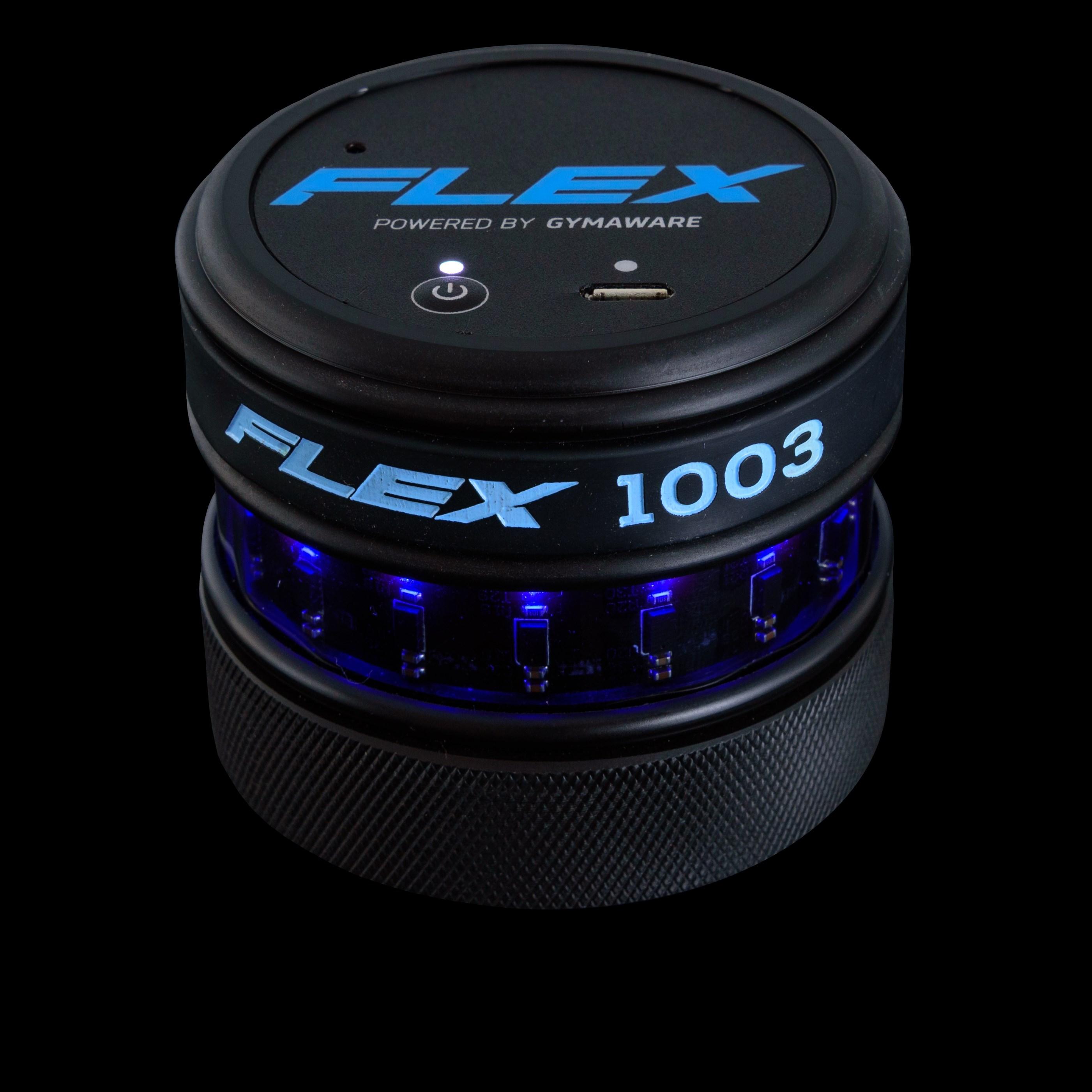
This month’s top research on technology and monitoring.
WHAT GPS VARIABLES ARE MOST PREDICTIVE OF INJURY?
WHY MONITORING HIP AND HAMSTRING STRENGTH COULD PREVENT INJURIES FOR SOCCER PLAYERS

The validity and reliability of global positioning system (GPS ) measurement variables has been shown repeatedly, with sensitivity improving over the past decade (see HERE). The same confidence in measurement is shown with monitoringtraining load by multiplying session rating of perceived exertion (sRPE) by the duration (time in minutes, see HERE). These measurements and monitoring of training help to identify relationships with injury incidence and appropriate management of training load.
The suitability of training demands (volume, intensity, and progression) is context specific, and research in Major League Soccer (MLS) athletes is lacking. Therefore, researchers aimed to identify a relationship between injury rates and GPS variables (e.g. total distance (TD), high speed running (HSR), sprint distance (SD), the sum of accelerationsand decelerations (AD), and training load (sRPE x time) across two seasons in MLS players, as well as a potential protective effect based on body composition and fitness level.
Twenty-two players in 2020 and 26 players in 2021 (age 25.4±4.5) from two MLS soccer teams, across four positions (central defenders (7), full backs (7), central midfielders (10), forwards (7)) had GPS training, competition, and injury data monitored during the 2021 and 2022 preseason periods.
An ‘injury’ was noted when a player was unable to participate in or complete all training or competition scheduled for a period greater than 24-hr after the incident.
GPS metrics included TD in metres (m), HSR was 19.8-25.2 km hr-1, SD was >25.2 km hr-1, and accelerations and decelerations were events >3m s-2 lasting 0.5-sec. sRPE was recorded using a 1-10 scale (see HERE) following the completion of a session or competition. Body composition was assessed via ultrasound and fitness was measured by performing a Yo-Yo Intermittent Recovery Test.
Data was analysed for association between physical characteristics, training load fluctuations, and occurrence of injury.
SCIENCE FOR SPORT PODCAST EP 68

There was a decrease in injuries and time lost due to injury between the two pre-seasons (
(11 injuries, 113 days lost in 2020 and eight injuries, 78 days lost in 2021).
SD volume had the strongest relationship with injury incidence across the two pre-seasons.
Total number of AD had the weakest relationship with injury incidence and was a metric that consistently accumulated the highest volume in the first two weeks of pre-season, possibly due to a lot of time spent playing small-sided games.
There was no relationship recognised between fitness level or body composition and injury incidence, suggesting they were at adequate levels prior to the pre-season.
Want to learn more?


Then check these out...





Looking back on data from previous seasons can help coaches learn from mistakes and identify ways to better progress and monitor training variables so the risk of injury is lowered in subsequent seasons. Start with a plan of how to progress the volume of work in the first 4-6 weeks and expose athletes to necessary intensity (speeds) to best prepare them for the training demands they will experience in a given match and a full week of in season training. Based on results from this study, sprinting distance (> 25.2 km hr۱) would be an important metric to plan and monitor.

Adequate exposure is critical for high-speed activity, avoiding spikes in volume that exceed 30%, aiming for a gradual increase (rising by 10% each week, see HERE) or decreasing volume, possibly pushing higher-intensity activity to another day when fatigue is noted.
Starting the pre-season practice period with a large portion of time spent playing small-sided games, decreasing the size of a typical competition field, is a great way to accumulate a greater amount of ‘soccer actions’ (e.g. dribbling, passing, tackling, see HERE), change of directions, cardiovascular response, and RPE (see HERE) compared to full-field play.
During the initial weeks of pre-season practice, coaches need to prescribe additional high-speed running and sprinting work throughout (beginning, middle, and end) to expose athletes to the stresses of match-play that they are missing out on while performing small-sided games. Use the previous year’s match-play volumes and start with 50% of that value in the first session, progressing roughly 10% each high-intensity session thereafter.

A sprint must be at least 30m in length to allow athletes time and space to accelerate to maximal speed. I would suggest somewhere in the 40-60m range and encourage athletes to gradually accelerate and allow plenty of space to decelerate, aiming for roughly 20-30m of fullspeed exposure prior to slowing down. Doing this across the entire length of the pitch helps to include a walking and recovery period without too much standing around between repetitions.
Further, full-speed sprints should be separated initially by 2-3min of passive recovery; as the pre-season progresses this rest period can be decreased as long as speed is able to be achieved. Dividing up volume across the session, performing some repetitions at full capacity, immediately after the warm-up will be helpful for exposure and confidence. Performing these sprints later in the session would help to challenge the athletes in a fatigued state, but reps can be minimal (1-3) to keep risk of injury low.
As the in-season period nears, coaches can extend practice segments to incorporate competition-specific constraints (e.g. field size and number of players) to allow for contacts with the ball, interactions with players, and exposure to match-specific running demands.
Adequate fitness can be protective to large or quick increases in high-intensity running (see HERE or HERE), therefore performing initial assessments using the Yo-Yo Intermittent Recovery Test or 30-15 Intermittent Fitness Test can be a great way to motivate athletes and hold them accountable to standards prior to the season. Based on this study, athletes achieved the 850±175-m distance for the Yo-Yo Intermittent Recovery Test and were ~8-9% body fat.
“Injury prevention is nearly impossible butcoaching and support staff can work together tomitigate risk of injury through assessments, planning, and monitoring. There are twonoticeable spikes in workload during these two seasons - in 2020, SD nearly doubled betweenweeks two and three, while in 2021, HSR distancemore than doubled from weeks one to two. Recognising this, the injury incidence over the two seasons, and the relationship between injuryand GPS metrics presented from this research, we see that sprinting distance is the most notablevariable to manage.
“Small-sided games provide a lot of opportunity by way of developing fitness, sport-specific skill, and changes of direction, but they cannot and do not allow the opportunity for athletes to achieve the full strides and speeds experienced with a competition sized field. This has to be appreciated, especially since sprinting carries arguably the greatest risk for injury if not managed appropriately.
“When we zoom out, there is a lot to prepare for, plan, and monitor across the year but when we manage the different segments of the year appropriately, especially the preseason period, fitness, speed, and strength should already be developed through the off-season and the focus should be on a gradual progression to exposure of in-game volumes and intensities.
“Work backward from the first match and do not rush this process. Remember, more is not better- athlete availability and maximising readiness is the ultimate goal, so stay patient and progressive from the start."
Hamstring injuries (HSI) along with hip and groin injuries (HGI), are common in youth and adolescent soccer players. There is a high risk of reinjury along with a significant time loss from training and competition with these injuries, due to the demand placed during soccer specific movement.
Reduced muscle strength has been shown to be a modifiable risk factor for these injuries. In order to improve injury management strategies, the present study looked to compare changes of hip and hamstring strength at different intervals during a simulated soccer match.
71 adult male (18-23 years old) from an international soccer academy were measured. Each subject completed a 90minute soccer-specific aerobic field test (SAFT), which included a 15-minute passive rest half-time after 45 minutes.
The field test included a continuous 20metre shuttle course and included randomised multi-directional and utility movements with frequent acceleration and deceleration movements.
Isometric hip strength was measured via the GroinBar Hip Strength Testing System before, during (at half-time) and after the SAFT. Eccentric hamstring strength was measured via the Nordic hamstring exercise using a Hamstring Solo Elite at the same intervals.




Hip and hamstring strength are negatively affected by increasing exercise duration as seen through simulated soccer activity with youth soccer players. Before activity compared to at half-time of activity, hip isometric strength decreased by 20-25 Newtons of force and 30-47 Newtons of force following activity.
Eccentric hamstring strength decreased from half-time of activity to the cessation of activity, although at a lower rate when compared to isometric hip strength. This may be due to the locomotive demands of the SAFT having less effect on eccentric hamstring strength, which is primarily recruited in maximal speed running and rapid deceleration. One can assume that strength levels will decrease even more significantly when proper recovery time is not given - this is common with youth soccer when match congestion in a fixed period is common practice.
The dose dependent reductions in strength seen in this study may lead to further injury risk in both muscle groups as the season progresses. The results may also be underrepresented, as it did not account for actual match factors such as contact and unexpected biomechanical / anatomical stresses.

Overall, this study shows the importance of monitoring strength within the season to better inform decision-making around training/match scheduling of individual players. In order to reduce the risk of injury, monitoring should occur at regular intervals throughout the season including before matches and increase during periods of fixture congestion. This can help to inform coaches of their player s strength deficits along with possibly reducing the risk of injury before it occurs.
Want to learn more?

Then check these out...
Isometric hip strength showed significant decreases in strength in both abduction and adduction from pre-SAFT levels compared to half-time and post-SAFT. The strength levels decreased linearly with exercise duration, with the lowest levels following the SAFT.
Eccentric hamstring levels reduced but by less significant rates compared to the hip abduction and adduction levels. Strength levels also decreased linearly, with the lowest levels seen post-SAFT.
This study looks at the negative effects that simulated soccer activity has on the strength of important muscle groups in the lower extremity, which are vital for sport. It proves the importance of consistently monitoring athletes' strength within the season to reduce the risks of reinjury and missed time.
“It also sheds light on the importance of addressing hip abduction/adduction strength , which is commonly missed in routine strengthening programs. Having individual plans for athletes to better understand their need for recovery within the season is vital for the team’s success.”
This month’s top research on fatigue and recovery.

WHAT IS FATIGUE, AND HOW DOES IT AFFECT THE CENTRAL AND PERIPHERAL NERVOUS SYSTEM?
WHAT ARE THE PRIMARY PREDICTORS OF SLEEP QUALITY IN YOUTH ATHLETES

OBJECTIVE
Fatigue is common with all athletes at some point in their training cycles. It is known as the failure of our bodies to maintain the required forcegenerating capacity to complete voluntary effort. With resistance exercise, fatigue is related to the type of exercise, the volume of training and the level of effort.
This study reveals definitions of what fatigue is and how it affects both the c entral and peripheral nervous system.
With this, the fitness-fatigue model is reviewed which presents how overtraining occurs and how it is affected by our recovery time.
The authors define the fitness-fatigue model, which states that overtraining will occur when the positive effects of resistance training is outweighed by the negative effects of fatigue. This is due to both central and peripheral nervous system fatigue, which is present when there is a summation of repeated bouts of training with pre-fatigue and improper recovery.
Through this, fatigue accumulates causing muscle damage (central nervous system) and depletion of energy substrates along with accumulation of metabolic byproducts (peripheralfatigue).
Although no experiment was designed in this study, it offered rationale for how and why fatigue happens. This is important for fitness professionals to understand when sequencing training programs.
SCIENCE FOR SPORT PODCAST EP 90






The fitness fatigue model is a simplification of how overtraining occurs. In basic terms, if our energy is depleted and our muscle activation is not recovered properly from training sessions, fatigue will accumulate and carry over time.
It is important to note the mechanisms in which fatigue accumulates is two fold; both from our central and peripheral nervous systems which work together to carry out bodily functions. Knowing this connection allows fitness professionals to educate their athletes when fatigue is becoming apparent. It can happen in an acute period within a session, or chronically when proper recovery time is not given. We can further assess our athletes’ fatigue within a session with use of the Borg Rating of Perceived Exertion Scale rating (how hard they are working on a scale of 6-20). We can also assess their fatigue over time with the Visual Analog Scale of Fatigue.
Proper recovery time may include extra days between sessions, variation of sequencing of activity and paying attention to not overtrain movements that make the athlete more prone to injury.
Want to learn more?
Then check these out...
The authors found fatigue accumulates when there is improper recovery time within and between resistance trainingsessions They explain that fatigue accumulates secondary to this in the peripheral and central nervous systems Peripheralfatigue accumulates when there is depletion of substrates such as phosphocreatine and glycogen. Central fatigue accumulates when there is a decrease in muscle voluntaryactivation which is attributed to a decline in the motor units output within the muscle As these values increase, the ability for increases in strength is diminished

“Avoiding overtraining is vital to keep athletes healthy and is important both in and out of season. Being able to understand how fatigue accumulates when proper recovery is not given is vital to a player’s and team’ s success.
“
In order to understand this concept, we must realise that fatigue is multifactorial and is affected by our muscular and cardiovascular system along with nutrition intake. Educating athletes on proper recovery is the first step in teaching them how to avoid accumulating fatigue and a decrease in performance.”

Monitoring an athlete’s sleep quality and duration can be helpful in supporting this vital aspect of performance and recovery (see HERE). Surveys on sleep (see HERE or HERE) exist to identify individuals who are experiencing poor sleep practices, but these can often be laborious and seemingly impractical to implement with athletes on a frequent (daily, weekly) basis. Further, although the information gained can be helpful, it highlights the multifactorial influences of poor sleep hygiene, leaving the coach and athlete overwhelmed and without any direction on how or what to improve.
This study employed a regression analysis technique (see HERE) to find the primary indicators that influence sleep quality in youth athletes, aiming to create a nomogram to assist coaches in determining high risk individuals or areas that could be addressed relative to training or lifestyle factors.
One-hundred and fifteen male and female youth (age <21) athletes from 11 elite National Sports Associations in Singapore provided demographic information related to training and sleep, as well as completing the Pittsburgh Sleep Quality Index (PSQI).
A total of 42 variables were identified based on sleep history, potential disturbances, environment, nutrition and activities before bed (e.g. reading, social media interaction, music, texting, etc.), and training variables (e.g. sport, phase, frequency, hours, time of day, etc.).
Using least absolute shrink age and selection operator regression (see HERE) the variables that were most predictive of reduced sleep quality were identified and tested against a model using all considered variables.
Lastly, a nomogram (see HERE) was created to streamline ident ification and prediction of poor sleep quality.
Of the 42 variables analysed to influence sleep quality, seven were identified as being primary:
Training frequency before ۸am
Training hours per week
Pre-bedtime computer usage frequency
Pre-bedtime text/call frequency
Pre-bedtime reading frequency
Time check frequency


Sport type (team or individual)

Team sport athletes had a higher incidence of poor sleep quality.
A higher prevalence of poor sleep quality for athletes with lower weekly training length.

Reading before bed reduced the incidence of poor sleep quality.
Want to learn more?
Then check these out...



Research shows most athletes have a preference and personality for morning or evening training (see HERE), and this should be considered for youth athletes when selecting a sport (team or individual) to pursue. Athletes who are more energised during the morning hours may be best served to participate in individual sports, whereas athletes who favour the afternoon and evening hours can thrive in team sports where practices and competitions are typically held.
Implementing a more thorough sleep questionnaire such as the PSQI or Athlete Sleep Behaviour Questionnaire during an initial onboarding period (e.g. beginning of an off-season) can help provide a complete assessment of an athlete’s sleep habits. However, in order to be efficient with time, providing immediate feedback to coaches and athletes with direction and interpretation relative to sleep, a modified version that simply asks for a report of sleep quality and quantity would be best. Coaches can use the results of this study to ask follow-up questions relative to pre-bed routine and provide guidance on habits (e.g. reducing screen time or clock checking and encouraging reading before bed).
Using the nomogram created from this research provides a way to immediately assess the seven primary influencers identified in this study without the need of any electronic device (e.g. computer, calculator etc.) and understand the ‘predicted risk of poor quality sleep’ based on the responses to each question. This can be used in the field or on the weight room floor and can lead to improved conversation and specific interventions to reduce the risk of poor sleep quality.
Since reading was the pre-bed activity that was most associated with improved sleep quality, encouraging athletes to read by providing a specific book that the athlete(s) can read and allow for further discussion and learning to support their development can be a way to promote this activity, and reduce negative habits (e.g. screen time, social media use, etc.)
To reduce the amount or frequency of time checking, coaches should encourage athletes to keep any clock in their room out of immediate sight and keep it dim or unilluminated if possible. This will help reduce the amount of stress or worry associated with the time if athletes are stressed about trouble falling asleep or having to wake up early. Simply discourage them from checking the clock and encourage them to perform deep breathing or journaling techniques to help with this.
Coaches can support an athlete’s sleep by minimising the frequency or duration that training occurs before ۸am. Schedules can be demanding and working to provide off-days or alternative training opportunities during afternoon-evening hours can be more productive, while allowing for more sleep during night-time to early morning hours.
Coaches should encourage athletes to limit screen time (e.g. computer, phone) especially interactions with social media or texting which can create emotional responses that negatively impact sleep quality.

Since training volume (duration across the week) had an influence on sleep quality, coaches should aim to vary the amount of training volume to promote adaptation, but also allow for recovery. Unexpectedly, training less did not improve sleep quality, therefore, it is important to challenge young athletes by stretching the limits of their schedule and maximising training opportunities. This will require them to manage their time more effectively and help them mature as an individual balancing all their involvement (e.g. academics, social, hobbies, etc.)
For athletes who struggle with sleep quantity and quality, implementing a time-management plan that provides structure and routine can help give them the direction and guidance necessary to support proper sleep hygiene.
Ultimately, the important thing around sleep monitoring to understand is to identify individuals in need and prioritise strategies by providing one specific task to improve on. Such as reading for ۲۰min prior to bed or staying consistent with a specific bedtime each night. Focus on changing one thing at a time versus throwing a bunch of generalised guidance at them.


“The encouraging aspect of this research helps coaches to not ‘get lost in the weeds’ of the numerous factors that can influence sleep quality. Sleep is a complex and personal environment, therefore change can be difficult, but by identifying a specific aspect to modify, coaches can provide much better return on their educational pursuits and overall effectiveness. Especially in the name of practicality when working with a large number of athletes and identifying modifiable factors (e.g. pre-bed routine or mindset) as opposed to seemingly unmodifiable factors (e.g. sport, training hours, or frequency).
“Sleep hygiene is greatly influenced in the activities and environment in the hours preceding. Take the time to create consistent, sustainable habits that support sleep quality and quantity, this can have exponential returns on overall physical and cognitive development in youth athletes. Coaches must prioritise assessment and intervention in this space because it will set the athlete up for success in motor learning, recovery, and performance.”

Want to learn more?
Then check these out...
This month’s top research on youth development.
CAN MENTAL TOUGHNESS SUPPORT YOUTH SPORT PERFORMANCE - AND EVEN THEIR MORAL DEVELOPMENT
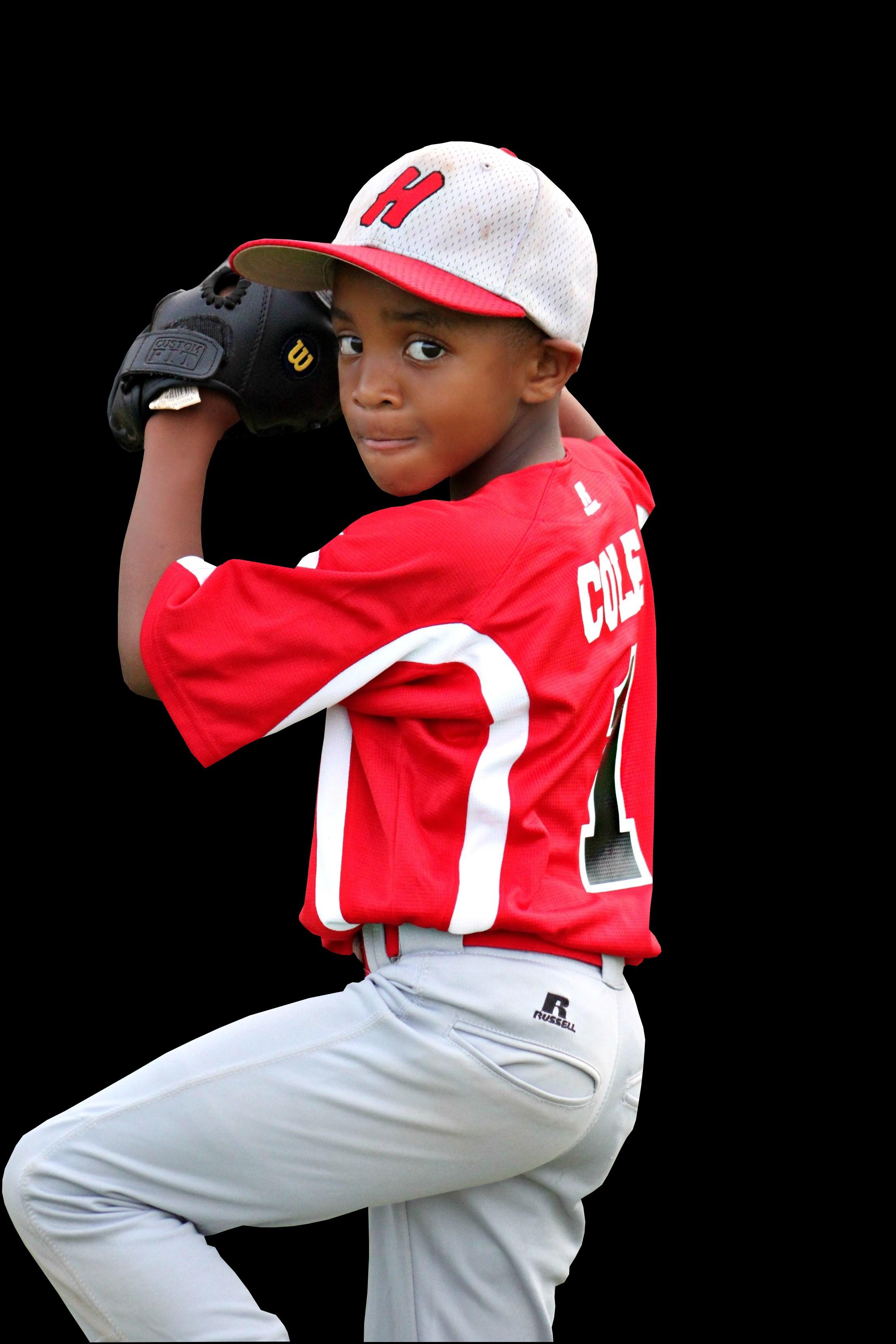
HOW DOES BIOLOGICAL MATURATION IMPACT JUMP AND CHANGE OF DIRECTION PERFORMANCE IN YOUNG FEMALES


Teachers, coaches and parents will often promote and reinforce the belief that sport develops both efficacy and mental toughness. But investigations into how sport and psycho-social development interact remains relatively misunderstood. Moreover,a majority of research has focussed on the positive outcomes of sport, such as confidence and resilience, while negative outcomes (i.e. aggression and burnout) are comparably misunderstood.
Therefore, the aim of this study was to examine if mental toughness played a mediating role between self-efficacy (beliefsan individual has about their capability) and prosocial/antisocial behaviours in youth athletes.
A total of 158 male (n=81) and female (n =77) secondary school students took part in this study. Students participated in a Sports Mental Toughness Questionnaire (SMTQ) (HERE) - a 14-item questionnaire with questions designed on a 5-point Likert scale from 1 (strongly disagree) to 5 (strongly agree). The questionnaire was split into three parts, featuring questions on confidence, constancy and control.
In addition, prosocial and antisocial behaviour in sport was measured using the PABS questionnaire (HERE). Again, these were designed on a 5-point Likert scale with questions such as “helped an opponent off the floor”, an example of a prosocial behaviour, and “deliberately fouled an opponent” highlighting an antisocial behaviour.
Finally, a General Self-Efficacy Scale – Schwarzer (GSES) (HERE) was used to identify an individual’s perceived capacity to deal with their experiences across a range of sporting contexts.

Findings from this study offer valuable insights to teachers, coaches and parents. First, the data suggests that although two items had to be excluded from the measures due to confirmatory factor analysis -- defined as an inability of the hypothesis and relationship with latent variables -- the SMTQ and PABS can be used reliably in youth.
A key discovery from the data set is that mental toughness does mediate the relationship between self-efficacy and prosocial/ antisocial behaviour in elite youth.
More specifically, constancy -- which is the ability to be enduring and consistent -- accounted for an individual’s ability to mediate their behaviour and approach to sport.
Finally, the higher participants rate themselves on adaptive behaviours -- such as completion of a task, commitment to a task, perseverance and persistence -- the more likely they are to show higher prosocial and lower antisocial behaviours.
Want to learn more?

Then check these out...



Being mentally tough requires an athlete to think, believe, and act under the emotional and psychological constraints of competition. A mistake I believe coaches make when working with youth is assuming that mental toughness is an innate quality. In reality, mental toughness is the accumulation and practice of strategies that we can borrow from other areas of our life, which importantly, can be trained. Therefore, we will split this practical takeaway session into a few tips we can instantly use to develop mental toughness:
1.Goal setting – spend time with your young athletes setting goals which are specific, measurable, achievable, relevant, and timebound (SMART). More specifically, I would look at opportunities to do this with small groups to avoid young athletes being overwhelmed/feeling the need to copy their peers’ goals. When goal-setting, it is important to first provide opportunities to review these goals (every four weeks is a good timeframe from anecdotal experience). This will allow individuals to become more aware of the goals that they commit too. Secondly, ensuring these are process-driven goals (e.g. execution of a technical skill) are more useful than performance goals (e.g. “we will win this game”), as these are outside of the athlete’s control. Such strategies are discussed in the attached video, where Martin Hagger breaks down the role of goal setting on reaching professionalism in sport.
2.Positive self-talk (PST) – a particularly effective strategy for youth as highlighted HERE, PST is a method used by many to develop mental toughness. PST is a simple shift in mindset, where athletes should focus on the present tasks at hand in a positive manner. For example, in tennis, an individual may miss a shot. An example of positive self-talk would be “let it go, you’ll do better next time” or “we all make mistakes”, as opposed to excessive blame/frustration over it. According to Hatzigeorgiadi et al., ( ۲۰۰۸) in the attached article, negative self-talk generally leads to poorer performance, whereas a positive approach supports improved outcomes. All of these require constancy, defined in the findings as an ability to remain consistent and persistent to change. Therefore, exploring this with your students/athletes can be a great way to secure long-term habit change.
3.Physiological adaptation - As sports scientists/strength and conditioning coaches, we can play a key part in creating adaptive behaviours through our sessions. Adaptive behaviours involve seeing a task through to the end, with prosocial behaviour known to be a side effect. In Jones’s 2008 research (HERE), strength training was found to enhance mental toughness and adaptive behaviours through challenging individuals to overcome adversity (e.g. progress from a dumbbell squat to a barbell front squat). The beauty of a gym environment is instant success isn’t a given - youth have to work hard to hit certain movement key performance indicators before progression. For example, in the article on plyometric training (HERE), athletes are assessed on their landing mechanics long before they are allowed to jump and hop. Such practice does not only enhance their physical capacity and tolerance to reactive load, but also their social and emotional capacity to be patient and see that progress is a life-long pursuit.


“This study marks an interesting area for sports scientists to consider in their practice. Firstly, sport is often misunderstood by those who do not participate or have not participated in it. Sport in my opinion, is a social vehicle for moral and selfdevelopment. Moreover, these qualities can and do lend to other areas of life such as education and employability. In the article by Nick Holt (HERE), it is agreed that coaches play a key role in teaching such qualities. This sentiment is echoed in the attached podcast, where Monika Chasazyrovaite, a former Lithuania Rhythmic Gymnastics Champion, suggests that all of the skills she developed (punctuality, organisation, control etc.) were pivotal to her success both in and outside of her sport. The difficulty from this publication is for coaches to read, interpret, and action these points with success.

“Future approaches to training should consider developing mental toughness given its role in mediation, through goal-setting, creating good habits, developing positive self-talk, and designing sessions which allow youth to break through perceived performance ceilings. Indeed, we must then have the ‘soft-skills’ to pick up children who are struggling and create an environment where we can allow athletes to be vulnerable in order to foster growth.
“Future research should look at supporting current practitioners, by providing a host of practical strategies that are low-budget, reliable and valid with a youth sample.”

Plyometric training (PT) is defined as exercises which allow muscles to exert maximal force ina short time (e.g. the countermovement jump).
When youth are exposed to plyometric training, dynamic movements such as jumps,change of direction, and sprints can improve.
This phenomenon has been widely researched in males (HERE and HERE).
Moreover, these studies have investigated the influence of biological maturity on performance. However, to date, no researcher has examined theimpact of maturation on PTin female youth. Therefore, the aim of this study was to investigate the impact of PT in female youth on various performance measures.
Forty-four female subjects (11yrs) from a secondary school participated in this study and were all assessed on maturation prior to starting the intervention. Students were classified as being ‘mid’ or ‘post’ peak height velocity (HERE).
The intervention group (n=25) was allocated to a plyometric training (PT) group, which included countermovement jumps, bilateral and unilateral hops, and horizontal and vertical jumps. This intervention was delivered before the students’ PE class for a seven-week period and was performed bi-weekly.
The control group (n=19) performed small-sided games, which would be typical for the students to support a study-comparison. To understand the benefits of PT, all students (PT and control) undertook a countermovement jump test, a reactive strength index assessment (maximal hopping test), and change of direction (CoD) assessment (5-10-5).
SCIENCE FOR SPORT PODCAST EP 94




Female athletes involved in jumping and cutting sports are four to six times more likely to sustain a serious knee injury compared to males (HERE). This should indicate that a large amount of time should be placed on lowerlimb injury prevention in our programming. When focussing on building a plyometric program, I would always start with a focus on landing. Encouraging athletes to land with a hipdominant strategy (HERE), where the hip and knee flex and the torso’s angle remains relatively perpendicular to the shin is key. An example of this can be seen in the attached video. Practically, 2-3 exercises per week at around 6-10 reps should be sufficient. These could include snap downs (HERE), box jumps, and hurdle hop and sticks.
This intervention showed no positive effects of PT on CoD performance measured by the 5-10-5 assessment in all subjects, despite other studies showing a positive interaction between PT and CoD (Asadi et al., 2017). When looking at the training methodology, all plyometric tasks were performed in a forward motion until week 3. Whilst these exercises should lend to improved motor unit recruitment and limb stiffness, a lack of reactive strength and/or limited multi-directional plyometrics may limit CoD performance. This makes sense given the emphasis the 5-10-5 test places on a high level of reactive lateral strength. In practice, lateral hop, sticks and rebounds can be fantastic (HERE). In addition, getting athletes to return to the middle of a ‘clock face’ following a series of hops allows them to develop strength in multiple positions. An advanced PT program which was shown to improve CoD performance from Jlid et al., (2019) can be seen on this LINK.
In comparison to males, adolescent females demonstrate measurable neuromuscular imbalances of ligament dominance, quadriceps dominance , and asymmetry, which leads to decreased dynamic knee stability (HERE). Some strategies to support quadricep and between-limb asymmetries may include singleleg work such as assisted pistol squats, single-leg RDLs, and single-leg box step-ups. Some additional balance exercises which serve as a great accessory or exercise to superset with can be found HERE. Such interventions should develop CMJ and RSI measures when coupled with low-level, fast ground contact plyometrics (e.g. pogo jumps, single-leg hops, and repeated hurdle hops)
Want to learn more?
Then check these out...
The findin The main finding of this study was the PT intervention improved jumping capability when measured by the CMJ and RSI test in mid-PHV female subjects.
In the female subjects who were post-PHV , there were no observed improvements in CMJ or RSI performance following a seven -week PT protocol.
This intervention showed no positive effects on CoD performance measured by the 5-10-5 assessment in all subjects.
Trivial and near-trivial changes were observed in both maturity groups’ control conditions, where the largest change in RSI was seen in the mid-PHV group.


“Publications focussing on the female athlete can already offer coaches such valuable information. For example, in the attached article , the authors suggest plyometric training during the menstrual cycle, with particular reference to ovulation (days 13-16), is associated with a reduction in knee stiffness and ACL injury risk. As a result of this, coaches must think about what they do during this time. In the attached podcast, the team at the ‘Female Athlete Podcast’ suggest training during the menstrual cycle is not only safe, but advised. Some considerations from the coach may be to limit the amount of lower-body plyometric training, focus on technical work (e.g. Olympic clean derivatives), or active recovery/mobility work. However, it is important to reinforce that athletes can and should train normally throughout this period.
Like their male counterparts, females want to become fitter, stronger and faster. I believe more focus should be placed on publishing research for young female athletes to educate and inform coaches on best practice. From this study, it may already be suggested that a seven-week training program is not long enough to support females in developing their CMJ, RSI, or CoD scores in those who are postPHV. I would suggest that athletes post-PHV may require greater program intensity as a result of circulating androgens.”
This month’s top research on nutrition.
CAN BETAINE SUPPLEMENTATION IMPROVE THE BIO-MOTOR ABILITIES OF YOUTH ATHLETES?

WHAT ARE THE EFFECTS OF CARBOHYDRATE AND CAFFEINE MOUTH RINSING ON PERFORMANCE?
IT'S A NO BRAINER: THE IMPORTANCE OF OMEGA 3S FOR CONTACT SPORT ATHLETES' CARDIOVASCULAR DISEASE RISKS AND NEUROLOGICAL HEALTH

Betaine is a modified amino acid consisting of glycine with three methyl groups. It is found in shellfish, flour, and certain vegetables such as beetroot, spinach, and beets. Betaine has been reported to promote protein synthesis by stimulating growth hormone (GH) and insulin-like growth factor 1 (IGF-1) secretion as part of the mTOR pathway, which may improve recovery from muscle-damaging exercise. Betaine may further enhance muscle protein synthesis by acting as an osmolyte to protect proteins from environmental stress and subsequent denaturing. Despite these proposed mechanisms, there is limited research examining the potential ergogenic effects of betaine supplementation. Studies have reported improved repeated sprint ability, attenuation of power losses, and increased time to exhaustion. Conversely, no improvements in anaerobic performance in trained and untrained subjects have been reported following betaine supplementation. Other studies have reported mixed results of betaine supplementation on increases in strength and power.
The following study was conducted as the third and final instalment of two previous studies, which both demonstrated a positive effect of betaine supplementation on ameliorating non-functional overreaching. The following study investigated the effect of betaine supplementation on the bio-motor abilities of youth professional soccer players.

Thirty professional Iranian youth male soccer players participated in this randomised, semiexperimental independent groups study. Players were grouped into their respective positions, and participants from each position were randomly assigned to consume a betaine supplement(2g.d-1) or placebo. Players consumed two capsules per day, two hours prior to and one hour following training sessions. All players participated in five training sessions of 90 minutes per week.
Players were assessed for their fitness status on three occasions: the week before the start of the season, seven weeks following midseason and the week following the end of the season. Each assessment period consisted of five testing days. On day one, tests for anthropometric measures, body composition, maturation status, countermovement jump and change of direction were assessed. On day two, maximal strength by one-rep maximum was assessed for the upper and lower body. On day three, sprint time and acceleration were assessed. On day four, power output of repeated sprints was assessed. On day five, players completed an aerobic power test (VO2max).


Betaine supplementation could increase strength, power and enduranceand enhance on-field performance for youth soccer players.
However, when working with youth athletes (<18 years), practitioners should avoid promoting or recommending the use of ergogenic supplements. Nutrition solutions should be constructed with a food first mindset.
Previous research has indicated the total energy expenditure of male youthacademy soccer players is significantly higher than the total energy expenditure of adult elite soccer players, attributable to growth andmaturation. While thi s study indicated the energy intake of academy soccer players matched energy requirements, other research has indicated inadequate carbohydrate intake in youth elite soccer players.
Carbohydrates play an important role in enhancing soccer performance by increasing glycogen stores and delaying fatigue. Therefore, practitioners should make a concerted effort to engage players, parents, and staff of teams to ensure players achieve their daily carbohydrate requirements to perform optimally between training and matches.
Practitioners may consider incorporating foods rich in betaine such as shellfish, beetroot or spinach into youth athletes’ diets that may provide similar ergogenic benefits to the results of this study, without the need for supplementation. These foods would also provide additional nutrients that are not present in betaine supplements, such as protein or certain micronutrients that could improve recovery and performance
Countermovement jump increased in both groups but was significantly greater between pre and post season in the betaine group (BG, +17.1%) compared to the placebo group (PG, +5.5%).
Change of direction did not vary significantly between pre and postseason groupsin BG (+2.0%) and PG (-1.4%).
Bench press one-rep maximum increased in both groups but was significantly greater between pre and post season in BG (+7.7%) than PG (+ 3.3%)
Leg press one-rep maximum increased in both groups but was significantly greater between pre and post season in BG (+4.5%) than PG (+ 1.7%).
Volume load in bench press increased significantly between pre and post season in BG (+23.1%) and PG (+7.3%);however, no significant betweengroup differences were observed.
Volume load in leg press increased significantly between pre and post season in BG (+11.5%) but not in PG (-0.8%). However, no significant between-group differences were observed.
Acceleration time did not change significantly between pre and postseason or between groups in BG (+1.4%) or PG (+3.2%).
Sprint time decreased significantly between pre and post season in BG (5.8%) and was significantly greater than PG (+0.8%), which showed no significant change.
The highest recorded power output from repeated sprints increased in both groups but was significantly greater between pre and post season in BG (19.3%) than PG (6.8%).
VO2max increased significantly between pre and post season for BG (+4.9 %) and was significantly greater than PG (+1.4%), which showed no significant change.
SCIENCE FOR SPORT PODCAST EP80



“
While the results of this study show a positive effect of betaine supplementation on improving the physical performance of soccer players, results from previous studies have shown conflicting results of the effect of betaine supplementation on performance. Therefore, further research is required to confirm the results of this study.
“Future studies should replicate this study design in adult male and female soccer players. Results from these studies would provide more practical recommendations for the use of supplements in older cohorts where ergogenic aids can be considered. However, the ‘food first’ principle should remain central and the foundation of all dietary recommendations for youth and adult athletes. Thus, implementing foods rich in betaine may be considered for both youth and adult athletes.”
OBJECTIVE
Mouth rinsing is a technique used by athletes which involves rinsing the mouth with a solution for 5-10 seconds without ingestion.
Previous research shows a positive effect of mouth rinsing with carbohydrate solutions on high-intensity endurance exercise performance. However, limited studies have shown similar effects of caffeine mouth rinsing. Furthermore, whether a combined or separate carbohydrate and caffeine mouth rinse lead to increases in resistance exercise and cognitive performance between male and female cohorts is unknown.
This study investigated the combined and separate effects of mouth rinsing with carbohydrate and caffeine solutions on muscular strength, endurance, and cognitive performance in male and female athletes.
Fourteen female and 13 male team sports athletes engaging in resistance training at least three times per week, participated in this double-blind, randomised, counter-balanced crossover study. All athletes were very light caffeine consumers (<25mg.day-1).
In the morning and following a 12-hour fast, athletes attended the laboratory for two familiarisation sessions followed by four testing days which were separated by 48-96h to allow recovery. For each testing day, athletes were given an appearance and taste matched mouth rinse of either 6% (1.5 g) maltodextrin, 2% (500 mg) caffeine, combined maltodextrin and caffeine, or water. Solutions were rinsed around the mouth for 10 seconds before being disposed into a plastic cup.
On each testing day, athletes heart rate, capillary glucose, arousal scale ratings and cognitive function were measured on arrival to the laboratory. Cognitive function was assessed using two reaction time tests which measured mean response accuracy and response time. Athletes were then instructed to rest for eight minutes, whereby they would mouth rinse using their assigned bolus every minute (eight times in total). Measurements for heart rate, capillary glucose, arousal scale ratings, and cognitive function were then remeasured.
After a 10-minute warm-up, muscular strength (1-RM) and muscular endurance (40% of 1-RM to failure) of squat and bench press exercises were then assessed. Once 1-RM performance was determined and following two minutes of passive rest, athletes completed three sets of repetitions to failure at 40% resistance of 1RM, with two minutes passive rest between sets. Mouth rinsing was conducted once before 1-RM attempts and twice before 40% of 1RM endurance tests, with one minute between rinses. Heart rate and RPE were measured between bench press and squat exercises and after testing. Capillary glucose was also measured after testing.


Where physical and cognitive tasks are performed (i.e., quickly spotting and making an accurate pass in football), a carbohydrate and caffeine combined mouth rinse may increase physical and cognitive performance.
Although the results of this study do show some positive effects, practitioners should approach making recommendations based on this study with caution since it is the first study to examine the effects of a carbohydrate and caffeine combined mouth rinse on resistance exercise performance and cognition in males and females.

Further, caffeine habituation may increase the number of adenosine receptors found at the mouth and thus down-regulate the sensitivity of caffeine. In the long-term, repeated use of a carbohydrate and caffeine mouth rinse may contribute to this increased tolerance effect, suggesting this method may only be beneficial as a short-term supplementation method for acute performance gains.
Practitioners may look to strategically lower caffeine intake leading into match-play to allow maximum benefit of the mouth rinse.
Practitioners should remind themselves of the food first principle here, since consumption of carbohydrates and caffeine through food before training is likely to elicit a greater performance gain for athletes than carbohydrate/caffeine mouth rinsing in a fasted state.
However, it would be interesting to see if the results of this study were replicated, as carbohydrate and caffeine combined mouth rinsing may be of benefit to individuals who struggle to consume carbohydrates and caffeine through the ingestion of food and drink in the morning before exercise (Eg. due to gastrointestinal distress). Further research on this area would also allow practitioners to determine whether identical recommendations of carbohydrate (6%, 1.5g) and caffeine (2%, 500 mg) concentrations in a combined mouth rinse can be made when working with male and female athletes.
Want to learn more?
Then check these out...
Heart rate and RPE increased over time, however, no differences between groups were observed.
There were no changes observed in blood glucose levels throughout the whole intervention. Felt arousal increased over time, and significantly higher felt arousal scores were recorded after mouth rinsing with the caffeine mouth rinse (Males: +58% Females: +68%) and carbohydrate/caffeine combined mouth rinse (Males: + 86%; Females: +58%), when compared to placebo (Males: +32%; Females: +38%). No between-sex differences were observed for any of these tests.
Reaction time significantly improved in one of the two reaction time tests following mouth rinse of the combined carbohydrate and caffeine bolus (Males: -7% Females: -6%) compared to placebo (Males: +1%; Females: -0.3%), despite no observed effect on response accuracy between any of the groups. Although males had better reaction time compared to females for the incongruent test, this difference was consistent between sexes for each mouth rinse group, suggesting mouth rinsing did not improve cognitive performance to a greater degree in males than females.
There was no effect of carbohydrate, caffeine or a combined mouth rinse on bench press and squat strength. No effect was observed for muscular endurance between males or females. Muscular endurance of squats increased significantly following mouth rinse of the combined carbohydrate and caffeine bolus when compared to placebo in the initial set. However, no significant differences were observed between groups for sets two and three, or between males or females.
SCIENCE FOR SPORT PODCAST EP 96




“Carbohydrate and caffeine combined mouth rinsing may be a useful nutritional strategy for athletes making weight or undertaking exercise for weight management purposes since the strategy reduces the perception of effort without the intake of additional weight. However, with high volume or intensity exercise, the risk of dehydration and related performance decrements increases if fluids are not consumed. Therefore, mouth rinsing may not be appropriate for individuals who struggle to intake enough fluid to remain hydrated. Indeed, current research already highlights how mouth rinsing with carbohydrates in isolation can improve endurance exercise performance , making these considerations immediately appropriate to consider for certain endurance athletes.
“Interestingly, the related article below found a carbohydrate and caffeine combined mouth rinse led to performance gains compared to a placebo. However, neither carbohydrate nor caffeine mouth rinse in isolation had the same observed effect. Future research may consider assessing brain activity to determine the mechanisms underlying these results.”
American football players are some of the most athletic people on the planet. Despite this, there is an increased risk of cardiovascular disease among this population. This is likely due in part to the intense stress their bodies are put under in both training and competition, along with having an increased body mass, which is largely beneficial for the sport.
Mild traumatic brain injuries (concussions) are also very prevalentwithin the sport, along with repetitive sub concussive head impacts that are linked to long-term negative changes in brain health.
Adequate Omega 3 status has long been associated with a reduced risk of cardiovascular disease and more recently, evidence is emerging to suggest they may also carry a neuroprotective effect as shown in the related article below.
This study aimed to quantify if supplementation of Omega 3s throughout an American football season could improve Omega 3 status and reduce the risk factors for brain injuries.
The present study used a multisite non-randomised design. Two football teams in the National Collegiate Athletic Association (NCAA) were recruited, one to receive the supplementation intervention, the other to act as a control group. The supplementation group was a team competing in Division 1 of theNCAA, and the control group competed in Division 3.
Players who were undergoing long term anti-inflammatory therapy, taking hypertensive medication, medication that affects blood lipids or those who were supplementing with fish oils or consuming fish more than twice a week, were excluded from the study. As were any injured or ill athletes who were unable to participate regularly.
A total of 31 athletes in the supplement group and 35 in the control group completed the study.
The supplementation group was given a fish oil supplement containing 2000mg of Docosahexaenoic acid (DHA), 560mg eicosapentaenoic acid (EPA) and 320 mg of Docosapentaenoic acid (DPA). This was given to participants for 89 days of the total 131 days - 80% compliance of supplementation was required for participants to be included within the study. Both groups were told to limit foods high in Omega 3s and were educated on these foods.
For both groups, prior to the season and supplementation, bloods were taken at various time points across the season, including after a preseason training camp and then irregularly across the competitive season. A total of six blood draws were carried out per participant across the 131 days of the study.
The bloods were analysed for several metrics including Omega 3index (as detailed here), Omega 6 to Omega 3 ratio and levels of serum neurofilament light (Nf-L) which is a biomarker for neuro-axonal damage. Ratios of EPA to arachidonic acid (AA ) were also taken.
The effect of supplementation on these biomarkers was calculated along with interaction effects between group, time and starter status with starting athletes being considered as those on the first or second team.
SCIENCE FOR SPORT PODCAST EP 95




Omega 3 supplementation will improve Omega 3 status in a population that is currently not supplementing with Omega 3s or consuming oily fish more than twice per week. Therefore, it is a valid method for increasing status in athletes who may be at risk of a deficiency. Improving Omega 3 status is also very likely to reduce risk of cardiovascular disease.
Due to the significantly lower increase in serum Nf-L, it seems as though an improved Omega 3 status may have a neuroprotective role. With that in mind, if working with any athletes at risk of sub concussive or concussive head injuries such as those that compete in combat (boxing etc) or contact sports (American football or rugby etc), it is important to ensure sufficient Omega 3 intake.
Recommendations of consuming two portions of oily fish per week may not necessarily be enough to improve Omega 3 status, so it is always useful to carry out tests to quantify an athlete's status. Use of an Omega 3 index is a useful way to carry this out.
If supplementation is required, then doses of 2-4g total of Omega 3s is recommended. If an athlete is vegan or vegetarian , this can be obtained from supplements such as krill oil.
Over the course of the study, EPA and DHA in the supplement group increased by 111% and 110% respectively while levels of DPA and AA both decreased by 10% and 12%. In the control group, EPA also increased but by 55% from baseline. Levels of DHA and AA in the control group did not change.
The Omega 3 index in the supplement group increased by 71.6 % from preseason to post, with several participants moving from a high risk value of <4% to moderate or low risk. There was no change in Omega 3 index in the control group. A similar pattern was seen with regards to Omega 6 to 3 ratio - decreasing in the supplement group by 32.1% and no change in control.
The ratio of EPA:AA increased in both groups: 155% in the supplement group compared to 44% in the control group.
Serum Nf-L increased from baseline in both groups. The control group saw an increase of between 30-60% across the season with the supplement group seeing an increase of only 0-25%. A significant difference between groups was found for serum NfL levels.

“This is another study highlighting the importance of Omega 3. It is impossible to ignore the vast evidence based on the many benefits of an adequate Omega 3 status, however as we’ve seen in the past, adequate intake of Omega 3 is uncommon in most athletes, with many still not consuming more then two portions of oily fish per week.

“Education from practitioners to athletes on the benefits of Omega 3s, along with adequate dosing and finding the most frictionless approach to improving status is, I believe, an essential part of practice. Health should always come first, and this is an intervention that will almost always improve the health of an athlete and is likely to also improve performance.
“In some of my recent applied work with injured athletes, a high-strength Omega 3 supplementation strategy has seen positive outcomes for sore/tight joints and ligaments.”




The next issue will be published on the 1st of next month.
Did you like all the great content in this issue?
If so, then make sure you spread the knowledge with your friends and colleagues!

